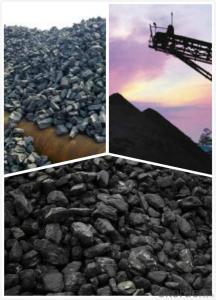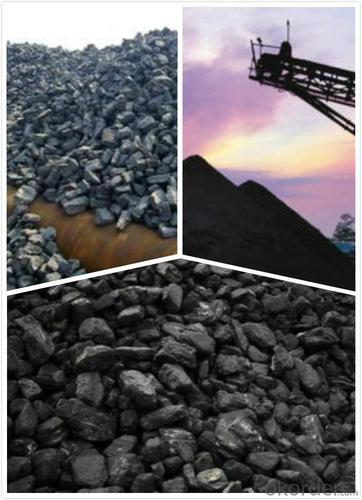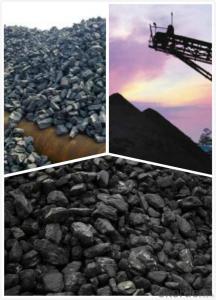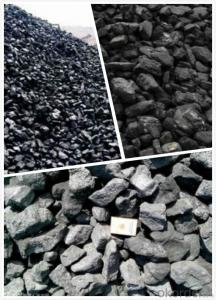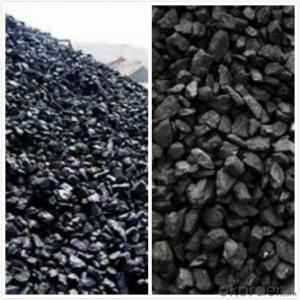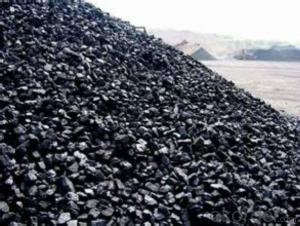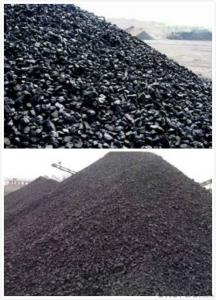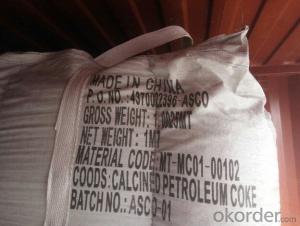120-150mm Foundry Coke of China Supplier for Furnace Charge
- Loading Port:
- Tianjin
- Payment Terms:
- TT OR LC
- Min Order Qty:
- 1100 m.t
- Supply Capability:
- 18000 m.t/month
OKorder Service Pledge
OKorder Financial Service
You Might Also Like
Product Description
Foundry Coke is one of metallurgical raw materials used for steel making.The coke handled by our corporation is made from superior coking coal in Shanxi province. Provided with the dvantages of low ash, low sulphur and high carbon.Our coke is well sold in European,American,Japanese and South-east Asian markets.
Features
This is a special coke that is used for furnaces to produce cast and ductile iron products. It is a source of heat and also helps to maintain the required carbon content of the metal product. Foundry coke production requires lower temperatures and longer times than blast furnace coke.
Specification
Fixed Carbon | Sulphur Content | Moisture | V.Matter | Ash |
86%min | 0.7%max | 5%max | 1.2%max | 12%max |
88%min | 0.65%max | 5%max | 1.5%max | 10%max |
85%min | 0.8%max | 15%max | 2%max | 13.5%max |
Pictures
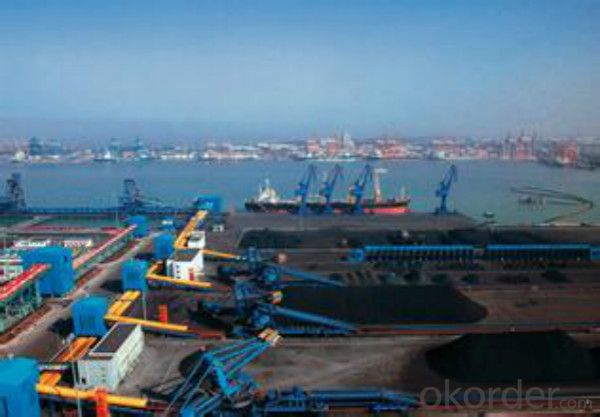
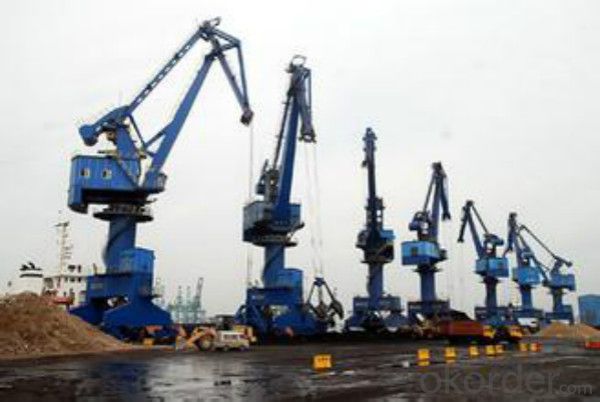
FAQ:
1 How long can we deliver the cargo?
Within 30 days after receiving the LC draft or down payment
2 Time for after-sales?
1 year.
3 Payment terms?
D/P, L/C, T/T with downpayment
- Q: There is a graphite mine, looking for three experts engaged in mineral processing industry asked. They say earthy graphite, and the answer to the taste is quite different. Some say that the fixed carbon content of 15, and some say graphite grade 90%. The same sample. Some people say that very valuable, and some say that the grade is too low, worthless. I'm all confused. What do you mean by graphite grade and fixed carbon?
- No, fixed carbon is the index of industrial analysis in coal, which is used to calculate calorific value. Graphite grade refers to the content of graphite in graphite ore.
- Q: Why carbon 14 can be used to measure the age of matter?
- How to use the half-life of C-14 measurement of a substance to the age due to its half-life of 5730 years, and the carbon is one of the organic elements in biological survival time, the need to breathe, in which 14 carbon content is fairly constant, creatures die will stop breathing, the body began to reduce carbon 14 people through. Lean a antique 14 carbon content, to estimate the approximate age, this process is known as carbon dating. The study found that cosmic rays from space continuous bombardment of atmosphere, this will make the bombardment of carbon atoms in the atmosphere to form part of the ordinary radioactive carbon atoms.
- Q: How does carbon affect food production?
- Carbon affects food production in several ways. First, carbon dioxide (CO2) is a critical component for photosynthesis, the process by which plants convert sunlight into energy and produce oxygen. Without sufficient carbon dioxide levels, plants cannot grow and produce food. However, excessive carbon emissions from human activities, such as burning fossil fuels, have led to increased concentrations of CO2 in the atmosphere. This can enhance plant growth initially, but if not balanced with other essential nutrients, it can lead to nutrient imbalances and reduced crop quality. Secondly, carbon is also a key element in the soil organic matter, which is crucial for soil fertility and health. Soil organic matter helps retain moisture, improves soil structure, and provides a habitat for beneficial microorganisms. High levels of carbon in the soil promote healthier plant growth, increase nutrient availability, and enhance water-holding capacity. However, unsustainable agricultural practices, such as excessive tilling and deforestation, can deplete soil carbon, leading to decreased fertility, erosion, and reduced food production. Furthermore, the increase in carbon emissions has contributed to global climate change, resulting in extreme weather events such as droughts, floods, and heatwaves. These events can have devastating consequences on food production. Droughts reduce water availability, making it challenging for crops to grow, while floods can wash away entire harvests. Heatwaves can damage crops, reduce yields, and increase the prevalence of pests and diseases. Climate change also alters the timing and distribution of rainfall, affecting planting and harvesting schedules and disrupting agricultural systems. Moreover, carbon emissions contribute to the acidification of oceans. Increased CO2 in the atmosphere leads to higher levels of dissolved carbon dioxide in seawater, forming carbonic acid. This acidification affects marine ecosystems, disrupting the food chain and impacting fish populations that serve as a vital protein source for many people. To mitigate the negative effects of carbon on food production, it is crucial to reduce carbon emissions and transition to more sustainable agricultural practices. This includes adopting climate-smart farming techniques such as agroforestry, conservation agriculture, and organic farming. These practices promote carbon sequestration in soils, reduce greenhouse gas emissions, enhance biodiversity, and improve soil health. Additionally, investing in research and development of climate-resilient crop varieties and improved irrigation systems can help minimize the impacts of climate change on food production.
- Q: How does carbon contribute to global warming?
- The greenhouse effect, caused by carbon, contributes to global warming. When carbon dioxide (CO2) and other greenhouse gases are released into the atmosphere, they trap heat from the sun, preventing its escape into space. As a result, the Earth's surface temperature increases and global warming occurs. The primary cause of carbon emissions is the burning of fossil fuels such as coal, oil, and natural gas for energy production, transportation, and industrial processes. These activities release significant amounts of CO2 into the atmosphere, which accumulates over time and intensifies the greenhouse effect. Deforestation and changes in land use also play a role in rising carbon levels. Trees and plants absorb CO2 through photosynthesis, acting as a natural carbon sink. However, when forests are cleared, the stored carbon is released back into the atmosphere. Additionally, the loss of trees reduces the overall capacity for CO2 absorption, aggravating the problem. The consequences of increased carbon emissions are extensive. Rising temperatures lead to the melting of polar ice caps and glaciers, resulting in sea-level rise and posing a threat to coastal communities. Moreover, carbon-driven global warming disrupts weather patterns, giving rise to extreme weather events like hurricanes, droughts, and heatwaves. To mitigate the impact of carbon on global warming, efforts must be made to reduce carbon emissions. This can be accomplished by transitioning to renewable energy sources such as solar and wind power, enhancing energy efficiency, promoting sustainable practices in agriculture and forestry, and implementing policies that encourage carbon capture and storage. Addressing carbon emissions is vital in combating global warming and its associated consequences. By comprehending the role of carbon in the greenhouse effect, we can work towards a sustainable future that minimizes the adverse effects of climate change.
- Q: What is carbon offsetting in the food industry?
- Carbon offsetting in the food industry refers to the practice of neutralizing or compensating for the greenhouse gas emissions associated with food production and distribution processes. It is a way for food companies to take responsibility for their carbon footprint and contribute to global efforts in mitigating climate change. Food production and distribution contribute significantly to greenhouse gas emissions, mainly through activities such as deforestation, land use changes, energy consumption, and transportation. Carbon offsetting allows companies in the food industry to invest in projects or initiatives that reduce or remove an equivalent amount of carbon dioxide from the atmosphere, effectively balancing out their emissions. There are various methods of carbon offsetting in the food industry. One common approach is investing in renewable energy projects, such as wind farms or solar power installations, to offset the emissions produced from energy consumption in food processing facilities or transportation. Another method is supporting projects that promote sustainable agriculture practices, such as reforestation or afforestation efforts, which can sequester carbon dioxide from the atmosphere. Carbon offsetting in the food industry also extends to supply chain management. Companies can work with their suppliers to implement more sustainable farming practices, reduce waste, and optimize transportation routes to minimize emissions. By collaborating with farmers, producers, and distributors, food companies can collectively work towards reducing their overall carbon footprint and achieving carbon neutrality. It is important to note that carbon offsetting should not be seen as a substitute for reducing emissions at the source. Instead, it should be viewed as a complementary measure to support the transition towards more sustainable and low-carbon practices in the food industry. By offsetting their emissions, food companies can demonstrate their commitment to environmental stewardship and contribute to the global fight against climate change.
- Q: What is the difference between soil organic matter and soil organic carbon?
- Usually we measured is organic carbon, and then multiplied by 1.724 is organic matter.
- Q: What is carbon neutral agriculture?
- Carbon neutral agriculture encompasses farming practices that strive to balance the amount of carbon released into the atmosphere with the amount of carbon sequestered or removed. Its objective is to adopt sustainable and environmentally friendly methods that minimize greenhouse gas emissions and promote the absorption of carbon dioxide from the atmosphere. There are several key practices involved in achieving carbon neutrality in agriculture. One of these practices involves reducing the usage of fossil fuels by implementing renewable energy sources, such as solar or wind power, for farm operations. This approach aids in diminishing emissions associated with machinery, equipment, and transportation. Another crucial aspect is the management of soil health and the enhancement of carbon sequestration. This can be accomplished via practices like cover cropping, crop rotation, and conservation tillage, which help augment organic matter in the soil. Consequently, this contributes to the storage of carbon. Furthermore, carbon neutral agriculture advocates for the use of organic fertilizers and natural pest control methods, thereby minimizing the necessity for synthetic chemicals that emit harmful greenhouse gases. Offsetting carbon emissions is another strategy employed in carbon neutral agriculture. This may involve the planting of trees on the farm or in nearby areas to absorb carbon dioxide from the atmosphere. Additionally, it can encompass participation in carbon credit programs, where farmers receive compensation for implementing sustainable practices that reduce emissions. In essence, carbon neutral agriculture adopts a comprehensive approach to minimize the carbon footprint of farming operations. By reducing emissions and maximizing carbon sequestration, it aids in mitigating climate change and promoting a more sustainable agricultural system.
- Q: What are the impacts of carbon emissions on the stability of kelp forests?
- Kelp forests are significantly affected by carbon emissions, which have a major impact on their stability. The increased levels of carbon dioxide in the atmosphere lead to ocean acidification, causing harmful effects on kelp. When carbon dioxide dissolves in seawater, it creates carbonic acid, which lowers the ocean's pH. This acidification prevents kelp from growing and developing properly, making them more vulnerable to stressors and reducing their overall stability. Ocean acidification affects kelp physiology in various ways. It impairs their ability to absorb essential nutrients like nitrogen and phosphorus, which are crucial for their growth. This nutrient deficiency weakens the kelp, making them more susceptible to diseases, predation, and damage from storms. Moreover, acidified seawater hinders the development of kelp spores, which impairs their ability to reproduce and regenerate kelp forests. Furthermore, carbon emissions contribute to the increase in sea temperatures, which also harm kelp forests. As the climate warms, kelp may face thermal stress, resulting in slower growth rates and higher mortality rates. Warmer waters also create favorable conditions for harmful algae species, which can outcompete kelp for space and resources, further destabilizing kelp forests. The stability of kelp forests is crucial because they provide numerous ecosystem services. They act as important carbon sinks, absorbing and storing large amounts of carbon dioxide from the atmosphere. Kelp forests also serve as habitats and nursery grounds for a wide range of marine species, including commercially important fish and invertebrates. They play a vital role in maintaining the health and productivity of coastal ecosystems by reducing coastal erosion, improving water quality, and supporting biodiversity. To mitigate the impacts of carbon emissions on kelp forests, it is crucial to reduce our carbon footprint by transitioning to cleaner and more sustainable energy sources. Additionally, protecting and restoring coastal habitats, including kelp forests, can enhance their resilience to climate change and other stressors. Implementing sustainable fishing practices and establishing marine protected areas can also help preserve and maintain the stability of kelp forests and the valuable ecosystem services they provide.
- Q: Today in the market to buy Yuba, instructions have such a word that I don't understand, please master Zhijiao: carbon fiber after energized carbon molecule formation of Brown movement, this movement can be effective in most of the electrical energy into the far infrared.
- When it is energized, its motion intensifies, the frequency becomes V2, and the frequency becomes larger, the vibration system is unstable and the frequency is back to its original frequency. So you have to release energy in the form of electromagnetic waves. I am not too clear about the specific release process. I know that the molecules do slow motion and generate additional electromagnetic waves. The frequency of the extra electromagnetic wave emitted is v2-v1, and its frequency falls in the far infrared region.
- Q: What is the difference between carbon nanomaterials and nano carbon materials?
- There are three main types of carbon nanomaterials: carbon nanotubes, carbon nanofibers, and carbon nanospheres.
Send your message to us
120-150mm Foundry Coke of China Supplier for Furnace Charge
- Loading Port:
- Tianjin
- Payment Terms:
- TT OR LC
- Min Order Qty:
- 1100 m.t
- Supply Capability:
- 18000 m.t/month
OKorder Service Pledge
OKorder Financial Service
Similar products
Hot products
Hot Searches
